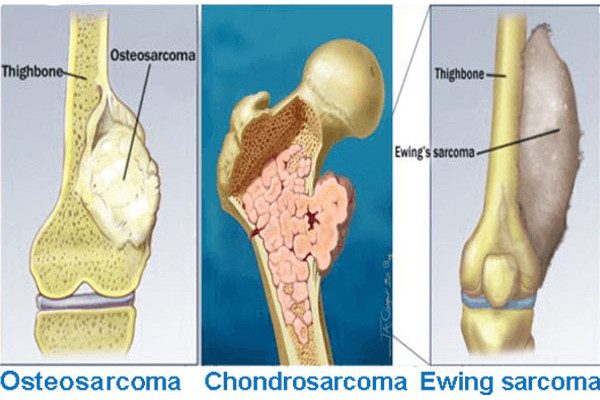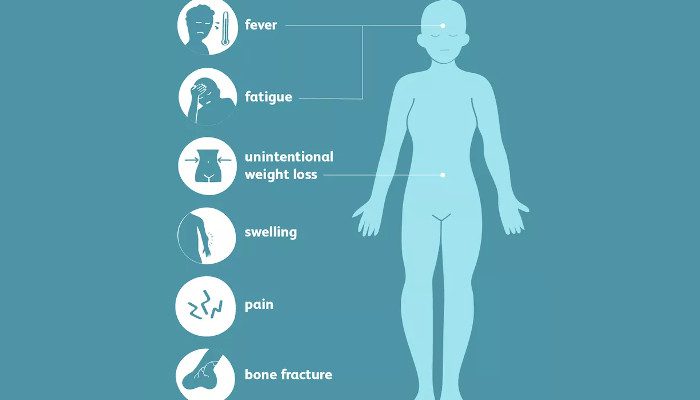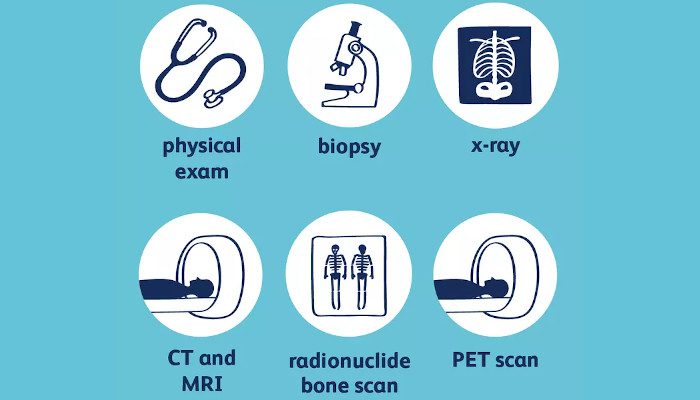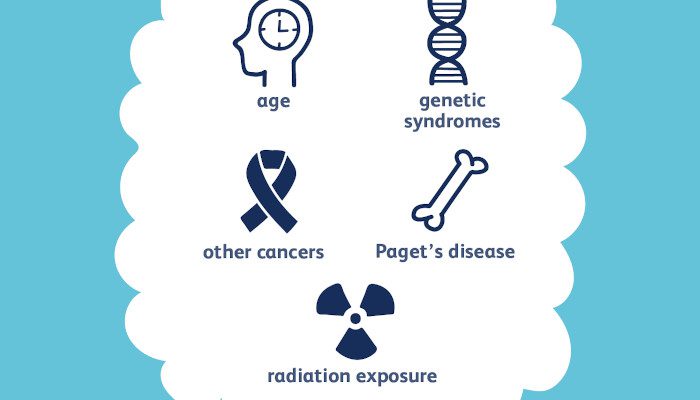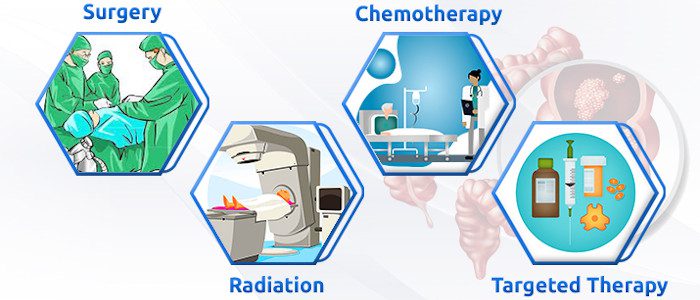July is Bone Cancer Awareness Month! During July, we join hands to raise awareness, support research, and inspire hope for bone cancer survivors. So, let’s work together to raise awareness of this illness, inform others, and work towards a time when no one will have to battle bone cancer alone. Bone cancer is a relatively uncommon type of cancer that manifests inside the bones. Although it can affect any bone in the body, the long bones of the arms and legs are most frequently affected. As the signs of this type of cancer might match those of other disorders, it can be challenging to identify it early. For prompt intervention and better results, it is essential to understand the symptoms and signs of bone cancer and the various bone cancer treatments. Here in this blog, we will go through the signs and symptoms of bone cancer and practical cures.
Knowledge of Bone Cancer:
Primary and secondary bone cancer are the two basic types into which bone cancer can be divided. While secondary bone cancer, sometimes called metastatic bone cancer, spreads to the bone from other body regions, including the breast, lung, or prostate, primary bone cancer begins within the bone itself.
Depending on the location, stage, and kind of disease, the symptoms of bone cancer can change. Bone cancer may not exhibit any signs in its early stages. However, the following symptoms could appear when the tumour enlarges:
- Pain: Pain is one of the most common signs of bone cancer is persistent, localized bone pain that is worse at night or after exercise. Although the pain may begin as being sporadic, it eventually becomes consistent as the tumour grows.
- Lumps and Swelling: The affected area may experience obvious lumps or swelling and the lump could be warm and painful to the touch.
- Bone Fractures: Cancer-related bone weakness increases the chance of fractures, even from minor trauma.
- Fatigue and Weight Loss: As with the majority of cancers, bone cancer can result in weariness and accidental weight loss.
- Motion Restriction: If a tumour is close to a joint, it may limit motion and create stiffness.
Options for Effective Treatment:
The method of treating bone cancer depends on a number of variables, including the disease’s type, stage, and location, as well as the patient’s general condition. For treating cancer, a multidisciplinary team of oncologists, orthopaedic surgeons, radiation oncologists, and other medical specialists usually works together to create a customized treatment plan. The following are some of the most typical bone cancer treatments:
- Surgery: Surgery is an essential component in treating bone cancer. The main objective is to remove the malignant tumour and any nearby tissues that have been harmed while maintaining the limb’s integrity and functionality. Amputation may occasionally be required if the tumour is substantial or the nearby nerves and blood vessels are harmed.
- Radiation therapy: Radiation therapy uses high-energy beams to shrink tumours and kill cancer cells. It is frequently used either before surgery to reduce the tumour or after to eradicate any cancer cells that may have persisted. Additionally, radiation therapy might lessen discomfort and enhance the general quality of life.
- Chemotherapy: It is the method of eliminating cancer cells from the body’s tissues by applying drugs. It can be used either before surgery to reduce the tumour or after to get rid of any cancer cells that might have survived. In cases of advanced or metastatic bone cancer, chemotherapy is also applied.
- Targeted Therapy: Therapy that directly targets cancer cells while sparing healthy cells is known as ‘targeted therapy’. Osteosarcoma and Ewing sarcoma are two examples of bone cancers that may respond well to this treatment method.
- Immunotherapy: Immunotherapy strengthens the immune system’s capacity to identify and combat cancer cells in the body. Immunotherapy is a promising treatment option for bone cancer, even if research is still in its early phases. Also, it can be combined with other strategies for better treatment.
In conclusion, excellent treatment outcomes depend on the early identification of bone cancer. You must get medical advice right away if you have chronic bone pain, swelling, or any other unsettling signs. Combinations of surgery, radiation therapy, chemotherapy, targeted therapy, and cutting-edge immunotherapy are frequently used to treat bone cancer. An individual’s ability to actively participate in their healthcare and increase the likelihood of a positive prognosis depends on how well-informed they are about the symptoms and available treatments. If you or your loved ones are suffering from bone cancer and want to fight against it, you should consult Oncoplus, the best hospital for bone cancer treatment. We take great satisfaction in being the greatest hospital for treating patients worldwide and battling this difficult illness. We provide individualized and comprehensive care that raises the bar for cancer thanks to state-of-the-art equipment and a team of recognized doctors. We can diagnose, treat, and monitor bone cancer with unmatched precision because our cutting-edge facilities give patients the best possible chance of recovery. Oncoplus walks you through every step of your recovery journey by fusing ground-breaking science with caring support. You may rely on us to provide unmatched knowledge and a better future.
Bone cancer can take place anywhere in the body, it normally affects the bones in the pelvis area or legs and arms, though cancer is quite rare it accounts to 1 percent of all cancers. Studies state that the noncancerous bone tumors are much more common than cancerous ones, the term doesn’t comprise of cancers, which begin somewhere else in the body and metastasize or spread to the bones, such cancers are termed for wherever they started in the body, for instance lung cancer, which spreads to the bones.
A few cancers take place only in children and others in adults. Oncologists normally surgically remove the cancer, but also use a combination of chemo and radiation therapy in treatment options. The option to use surgery, chemo or radiation therapy is purely based on the type and stage of bone cancer being treated. Consult with our specialist at Oncoplus Hospital, Defence Colony, if you experience symptoms such as unexplained weight loss, fatigue, bone pain, swelling and tenderness near the affected area and enfeebled bone, leading to stress fractures.
The reason for cancers of this type is not known, a few bone cancers have been linked to hereditary factors, while others are associated with previous radiation exposure. These cancers can be classified into different types based on the type of cell where the cancer began.
A few common kinds of bone cancer include; Osteosarcoma, which is the most common form of bone cancer. In this tumor, the cancerous cells produce bone, and occurs mostly among children and young adults, in the bones of the leg or arm. Chondrosarcoma is the second most common form of bone cancer in which the cancerous cells produce cartilage. It normally happens in the pelvis, legs or arms in middle-aged and older adults and Ewing Sarcoma tumors are commonly found in the pelvis, legs or arms of young adults and children.
It’s not clear what causes bone cancer, but experts opine a few factors, which are associated with an increased risk, including; Inherited genetic syndromes, Paget’s disease of bone and Radiation therapy for cancer. Exposure to radiation, which is given during radiation therapy for cancer, increases the risk of bone cancer in the future.
The treatment for this cancer (also known as bone sarcoma) depends on numerous factors including, the grade, type, location and size of the cancer as well the medical history, symptoms and personal preferences for treatment. Ewing sarcoma and Osteosarcoma can be treated with grouping chemotherapy, surgery and/or radiotherapy. Chondrosarcoma is normally treated with surgery alone. Learn more about cancers tele Consult with our best cancer doctors in India at Oncoplus Hospital, Defence Colony, New Delhi, write to us info@oncoplus.co.in or call us at +91 85889 09091 to book an appointment.
Cancer begins when cells grow out of control. Cells in any part of the body can become cancerous and spread (metastasise) to other parts.
Bone cancer is uncommon and starts when cells in the bone start to grow abnormally out of control. To understand bone cancer, it helps to know a little about normal bone tissue.
Most bones start out as softer, more flexible forms of tissue called cartilage and this cartilage later forms bones. In adults, cartilage is found at the end of some bones.
The bone itself has 2 kinds of cells.
- Osteoblasts – cells that lay down new bone.
- Osteoclasts – cells that dissolve old bone.
Bones look as if they don’t change much, but they are very active. New bone is always forming while old bone is dissolving. This helps keeps bones strong. There are some other cells in the bone marrow like plasma cells and fibroblasts.
Any of these bone cells can develop into cancer.
Primary bone cancers versus bone metastasis
Cancers that originate in the bones are called primary bone cancers.
In most cases of adults with any bone cancer types, cancer starts somewhere else and then spreads to the bones: this is called bone metastasis and this can develop from different types of advanced cancers like breast, lung, and prostate cancer. If you observe cancer cells in the bone with a microscope; you’ll find they look like the cancer cells in the organ they came from.
Types of primary bone cancers
Primary bone cancers (cancers that begin in the bone itself) are also called bone sarcomas.
There are many kinds of primary bone cancer and some of them are rare.
Osteosarcoma
Osteosarcoma (or osteogenic sarcoma) is the most commonly found primary bone cancer. It starts in an early form of bone cells and often occurs in young people between the 10 and 30, whereas about 1 in 10 osteosarcomas develop in people above 60: it is very rare in middle-aged people, and is more common in men. These develop mostly in the bones of the arms, legs, or pelvis.
Ewing tumour (Ewing sarcoma)
These are the second most common type of primary bone cancer found in children, teens, and young adults, and the third most common bone cancer. These rarely occur in adults older than 30. Most Ewing tumours develop in the bones, but they can start from other tissues and organs. The most common sites cancer are the hip (pelvic) bones, the bones in the chest wall (the ribs or shoulder blades), the bones of the spine, and the long bones of the legs.
Chondrosarcoma
Chondrosarcoma begins in early forms of cartilage cells and is the second most common primary bone cancer. It’s uncommon in people under 20, and the risk of chondrosarcoma rises as people get older.
Chondrosarcomas can begin in any place where there’s cartilage. Most develop in bones like the pelvic (hip) bones, legs, or arms and some others begin in the trachea, larynx, chest wall, shoulder blades, ribs, or skull.
High-grade undifferentiated pleomorphic sarcoma (UPS) of bone
This was previously known as malignant fibrous histiocytoma (MFH) of bone. Undifferentiated pleomorphic sarcoma (UPS) usually starts in soft tissues (connective tissues like ligaments, tendons, fat, and muscle). It’s rarer in bones, but if it does occur, it usually afflicts the legs (around the knees) or arms. This cancer mostly occurs in elderly and middle-aged adults and is very rare in children. It tends to grow locally, but sometimes it can spread to other parts of the body.
Fibrosarcoma of bone
Another from types of bone cancer that develops more often in soft tissues than in bones usually occurs in middle-aged adults. Bones in the legs, arms, and jaw are mostly affected.
Giant cell tumor of bone
This type of primary bone cancer can be benign (non-cancerous) or malignant and these tumors are most common in people between their 20s and 30s.
Giant cell bone tumours typically hit the legs (usually near the knees) or arms. They don’t usually spread to distant parts of the body, but after surgery they can recur (even more than once) in the place where they began. With every recurrence, the tumour gets more likely to spread to other parts of the body (most often to the lungs). Rarely will a malignant giant cell bone tumour spread to other parts of the body without first recurring locally.
Chordoma
This uncommon type of bone tumour occurs in the bones of the spine, mostly at the bottom of the spine (sacrum) or the base of the skull. It happens most often to adults older than 30 and is twice as common in men as in women and very rarely does it occur in children.
Chordomas usually grow slowly and don’t spread to other parts of the body and often come back in the same area if they are not removed completely.
Check the best hospital in Delhi for bone cancer
The various types and causes of bone cancer explained…
Though rarer than most types of cancer, the risk is highest for those between 10 and 30 years of age, particularly during a teenage growth spurt. This could mean a link between rapid bone growth and the risk of developing tumors. The risk does decrease with middle age but again rises in older adults (usually over the age of 60).
We’ve constantly provided the best treatment for cancer in South Delhi for the best part of two decades, and we also provide treatment for bone cancer in Delhi, with our oncology departments are comprised of the best cancer doctors in Delhi. If you are looking for treatment for bone cancer in Delhi, this article could be of some help.
Bone cancer happens when a tumor forms in a bone. A tumor could be malignant; it’s growing aggressively and spreading.
A malignant tumor is often referred to as cancerous. Cancer that begins in the bones is rare.
Types
Primary bone cancers are the most serious of all bone cancers. They form directly in the bones or surrounding tissue.
Cancer can also spread ( or metastasize), from another part of your body towards your bones. This is secondary bone cancer, and this type is more prevalent than primary.
The Common types of primary of bone cancer are:
Multiple myeloma (MM)
Multiple myeloma is the most prevalent form of bone cancer, this happens when cells grow in the bone marrow and cause tumors in other bones. MM will usually affect older adults.
Among bone cancers, MM has one of the best outlooks, and many people who have it www won’t need treatment.
Osteosarcoma (Osteogenic sarcoma)
Osteosarcoma generally affects children and adolescents, but it can also include adults. It usually originates at the tips of the long bones in the arms and legs.
Osteosarcoma may also start in the hips, shoulders, or other locations. It affects the hard tissue that provides the outer layer of your bones.
Chondrosarcoma
Chondrosarcoma can occur in the pelvis, thigh areas, and shoulders in older adults.
It forms in the tough connective tissue between your bones. This is the second most common primary cancer.
Ewing’s sarcoma
A much rare cancer that either begins in the soft tissues surrounding the bones or directly in the bones of children and young adults.
The long bones of the body — such as the arms and legs — and the pelvis are commonly affected.
What are the symptoms of bone cancer?
The symptoms of bone cancer are:
- pain and swelling in bones
- tangible hard mass formation in the long bones of the limbs
- fatigue or tiredness
Less common symptoms include:
- bones that break easily
- sudden weight loss
What causes?
The exact cause of bone cancer isn’t known to us, but there are some factors that may increase the chances.
These are:
Abnormal cellular growth
Healthy cells continually divide and replace older cells. After completing this process they die. Abnormal cells, however, continue living. They start forming masses of tissue that turn into tumors.
Radiation therapy
Radiation therapy, which kills dangerous cancer cells, can be used to treat bone cancer. However, osteosarcoma may form in some people who receive the treatment. The use of high doses of radiation may be a factor in this development.
Who is at risk ?
The following may be risk factors for bone cancer:
- having a family history of cancer, especially bone cancer
- having received radiation treatment or therapy in the past
- having Paget’s disease, which is a condition that causes the bones to break down and then grow back abnormally
- currently or previously having had multiple tumors in the cartilage, which is the connective tissue in the bone
